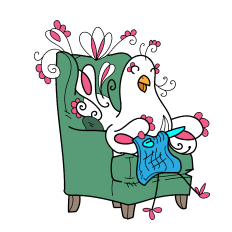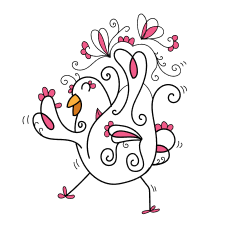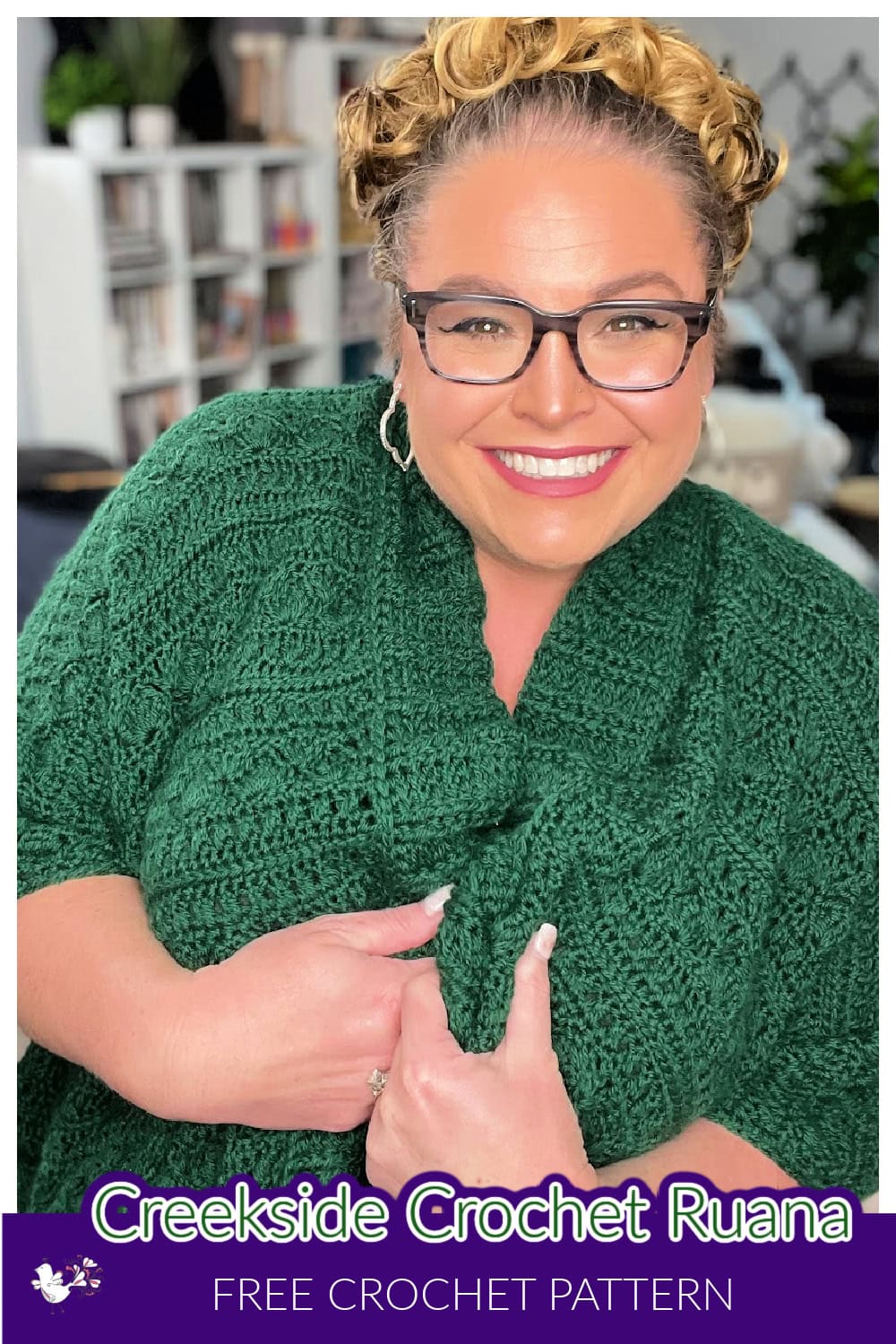DIY Knit Row Counter
Counting the rows of your knit project is essential in knowing where you are and how much farther you need to go. Yes, you can take the old fashioned approach of making a hash mark on a piece of paper, but sometimes that gets forgotten. Working in the round and keeping track of your rows has gotten easier with this DIY knit row counter.
*This post contains affiliate links. By clicking on one of these links and making a purchase a portion will go to the blog. The price you pay will not change and the small commission I receive helps me to keep brining you free content and giveaways on the blog. Thank you for your continued support.*
Knit Row Counters
Most knitters have seen a variety of row counters available in the market. Over time you might have found, like me, that there really wasn’t anything that forced you to count your rows as you worked. Manny times I would forget to mark a row that I finished and my two sleeves, or two front panels or two socks wouldn’t end up exactly the same.
Last year in our stocking stuff round up we found this amazing row counter that you keep on your needle. This forces you to move it with each round so that you never forget to add a row.
While purchasing a row counter is always fun I thought that it would be just as fun to show you how to make your own version. Best of all, NO JEWELRY SKILLS REQUIRED for this project.
For this tutorial I have teamed up with Beadaholique for the materials. They are also offering you an awesome discount code which you can find below to purchase the supplies that you will need.

About Beadaholique
The Beadaholique story started with a shoebox tucked under a bed in Sarah Diamond’s Santa Monica apartment. Over the course of a year that tiny shoebox became a file cabinet.
The file cabinet became the spare room in her apartment, and soon the entire apartment. We hired more friends and then bought a house which ultimately couldn’t accommodate our growth after only a few more fast paced years.
Nineteen years later, Beadaholique ships thousands of orders each day to beading hobbyists and jewelry makers that find us on multiple marketplaces in 85 countries.
Materials
For this project you will need a few jewelry making items. Some of these you may have from other projects that you have done. All of these items can be found on one page over at beadaholique for your convenience.
- BeadSmith one step looper pliers: (amazon affiliate: https://amzn.to/2ES0435)
- Wire Cutters
- 7mm Number Beads (numbers 1-10)
- 22g wire
- 10x6mm Lobster Clasp (1)
- 10mm CLOSED jump rings (10)
- Chain Nose Pliers
- Assorted Beads for decoration
Optional:
- Beading Mat
- Nylon Jaw Pliers
Making the Row Counter
To make the row counter you will be connecting the number beads with the jump rings to form a chain. Rather than using purchased eye pins we are going to be using this super awesome tool called the One Step Looper to create our connectors. With one squeeze of the pliers you are able to create the perfect loop and cut your wire in one step. NO JEWELRY SKILLS REQUIRED.
Our row counter is made by using jump rings, wire and number beads. The number beads tell you how many rows you have completed while the jump rings keep the counter on your needles.
In order to attach the number beads we need a wire with a loop on both ends. Creating a perfect loop can be a challenge even for skilled jewelry makers. Using the one step looper allows everyone to be able to make beautiful and consistent loops to finish their project.
Follow along with these six steps to make your own DIY row counter.
6 Steps to Making a Row Counter
Step ONE:
Once you have gathered all of your supplies you are ready to get started making your DIY knit row counter. You first step will be to cut your wire.
For this project you will need 10 pieces of about 2″ of 22g wire. This measurement does not need to be exact but don’t go less than 1.5″ or you won’t have enough room to work with on your wire. To cut the wire you will use your wire cutter.
NOTE: Be sure to hold on to the wire both on the spool and on the other side of your cutter. If you don’t hold on to it the piece that you cut will go flying away. Safety first, protect your eyes and hold onto the wire.

Step TWO:
Step two is to create your first loop. Taking your wire and putting it through the hole on the one step looper tool and squeezing the handle will make the loop that you need on the end of the wire.
Repeat this step for all 10 pieces of wire that you just cut.
Beadaholique has a great tutorial on using the one step looper that you can check out on their YouTube channel if you are having any trouble.

Step THREE:
THIS IS AN OPTIONAL STEP! At this point you will have one loop on your wire. This loop will hold the number bead on the wire and allow you to attach both sides to a jump ring.
Sometimes when you take your wire out of the one step looper the loop is opened slightly. If you want to straighten this out it may make step four go a little smoother.
Taking your chain nose pliers you will twist the loop closed.
NOTE: NEVER open the loop, always twist it. If you open the loop, like a C, you will distort the shape and you will never get a perfect circle again. Check out this video tutorial on how to open a jump ring from beadaholique. It is the same technique used to open and close our loops.

Step FOUR:
Now that you have a stopper on one side of our wire we can add the bead. You will need numbers 0-9 for this project. Place one bead on each of the wires that you have prepared.
Take your wire and place it back into the one step looper. Push the wire through the tool, just as you did before, until the bead rests on the outside of the plier. This will give you the perfect spacing on your wire for your bead to move around slightly.
Repeat the same step of closing the pliers and finish your loop. Add your bead and make your second loop for all of your numbers.

Step FIVE:
After you have made all of your number connectors you can start to join them together with the jump rings. For this project we are using closed jump rings. This means that there is no opening in the circle.
Closed jump rings are a better choice for this project because it is one less open point for the pieces to come apart. If you can’t find closed jump rings you can use regular jump rings, just double check that they are flush together.
Twist open one loop of your connector and add the jump ring. Twist the connector closed again. Make sure that there is no gap in the loop of your connector for the jump ring to come out of.
NOTE: You will start with number 1 and end with number 0. There will be a jump right to start the chain and the number 0 will finish the chain.

Repeat this same process on the other side of the connector with a second jump ring.

Step SIX:
Continue to add jump rings between each number until you get to the number zero. As you work through your numbers be sure to check that they are the right direction. Six and nine are the same bead just turned upside down.

Now that you are at the end of your row counter you can add some decorations and a lobster clasp as a marker to be able to use your counter.
Making Your Marker
In order to read your row counter you will also need a marker to help you keep track of your tens place. Using the same materials we can make a little marker using the wire and a lobster clasp.
Step ONE:
Again you will start by cutting a 2″ piece of 22g wire. For your marker you will only need a loop at one end. To keep your bead on the wire we will be making our own headpin.
Grab the very end of your wire with your chain nose pliers and fold over a small amount of wire. It should be about the length of the tip of your pliers, or as small as you can get. The smaller your fold the less you will see at the end of your bead.

Step TWO:
Securely grab the wire that you folded over and squish it as flat as you can with your pliers. This will stop your beads from falling off the wire.

Step THREE:
Now that you have your head pin you can put your beads on the wire. To finish your marker off you will use the one step looper to create a loop at the top of your beads. You will make this the same way you did with the number beads.

Step FOUR:
Twist open your loop and attach it to a lobster clasp. You can also make a second one of these but add it to your last number, the zero, instead of a lobster clasp. This will give your finished row counter an extra special touch.

How to Use the Knit Row Counter
Using the row counter you can easily keep track of your progress in your project.
When working a project you will only add your row counter when you have completed the first row. At this point you would slide the row counter onto your needles with the jump ring attached to the number one. This means that you have completed one row.
Every time you complete a row you will move your needle to the next jump ring until you get to the end.
Once you get to the zero bead you will have completed 10 rows. To denote that you have finished 11 rows you will use your marker. Placing your marker on the jump ring attached to the number one shows that you have completed 10 rows. Which ever ring your needle is in shows the ones place.
Below the row counter is showing that you have completed 35 rows. The marker is on the jump ring attached to the 3, denoting 30. The needle is in the jump ring attached to the 5. Adding together 30 + 5 you see that there are 35 rows completed.

Whip up a bunch of these for your knit group for the holidays, or a bunch for yourself for all of the WIPs that you have! I would love to see what your finished row counter looks like. Share with me in the Marly’s Minions Facebook group!
5 Fun Project Tutorials
Categories: Beading and Jewelry, Dibble Dabble Inspiration, Knitting















Thank you for this tutorial
Wow. I will give this a try. Can this counter also be used for crocheting? Just Curious. Thank you for this DIY row counter.
So happy to hear that you are going to try this out! Please post a photo in the Minions group so we can all see it! It does not work for crochet. I have Katelyn working on something that could be used the same way for crochet but we keep hitting road blocks right now. We will keep trying though!